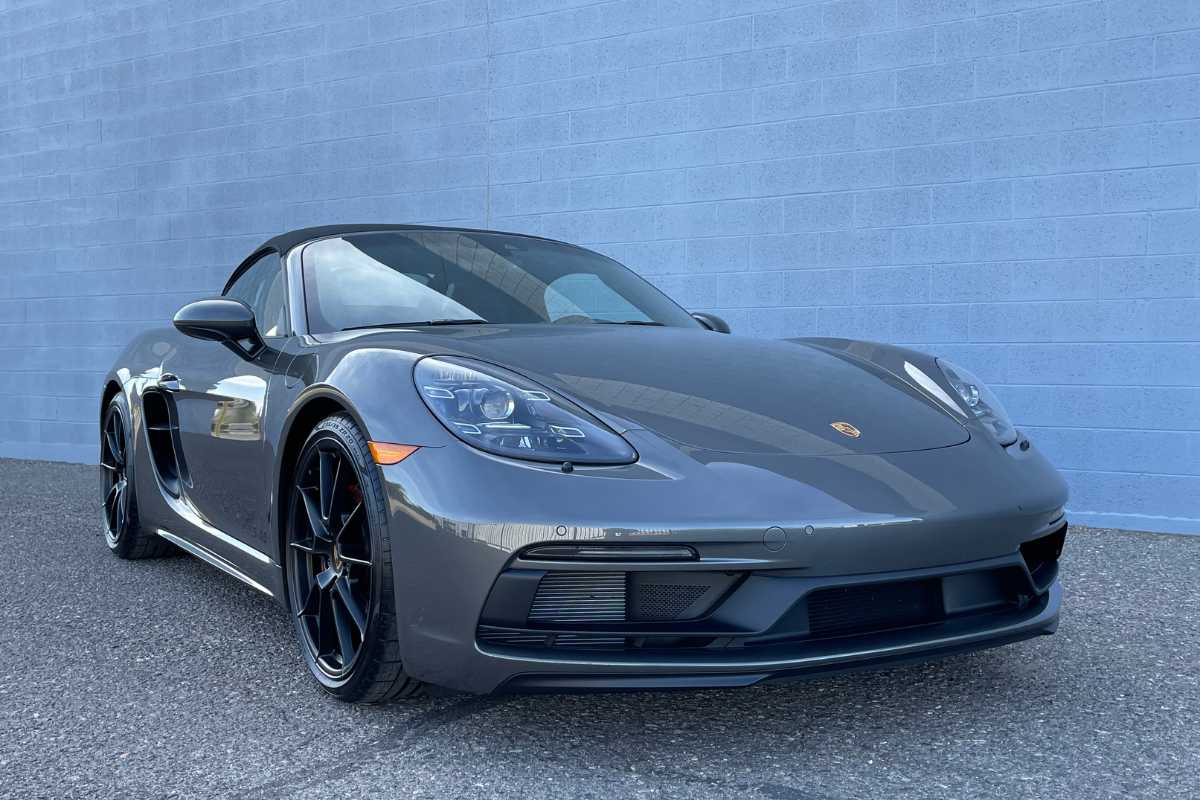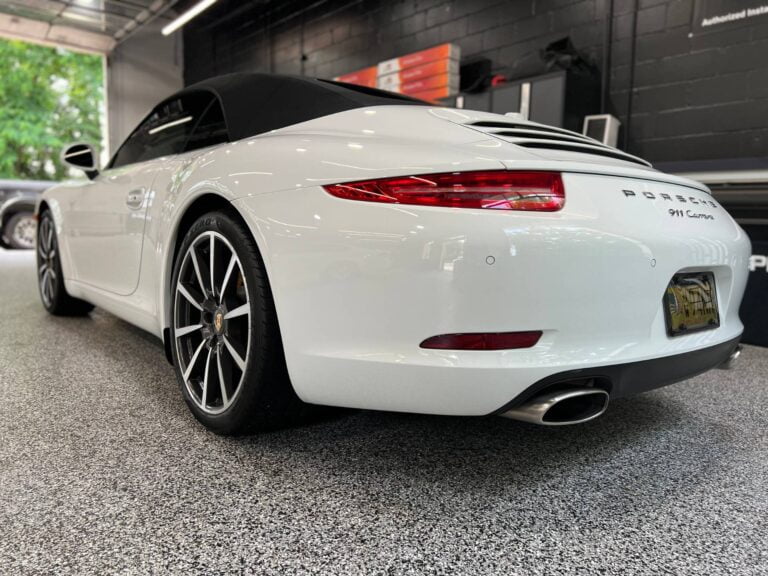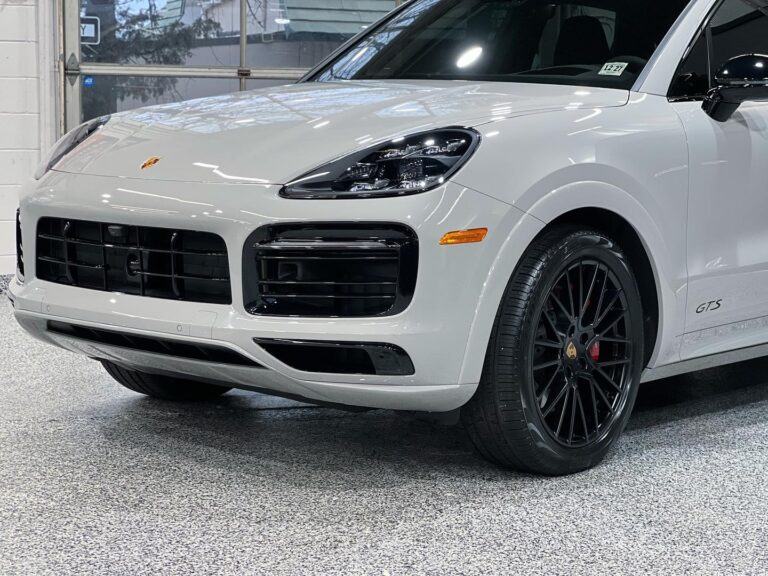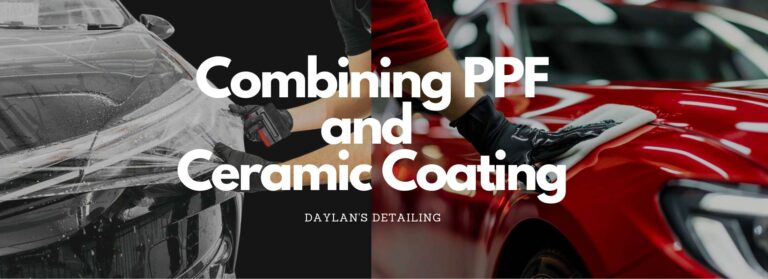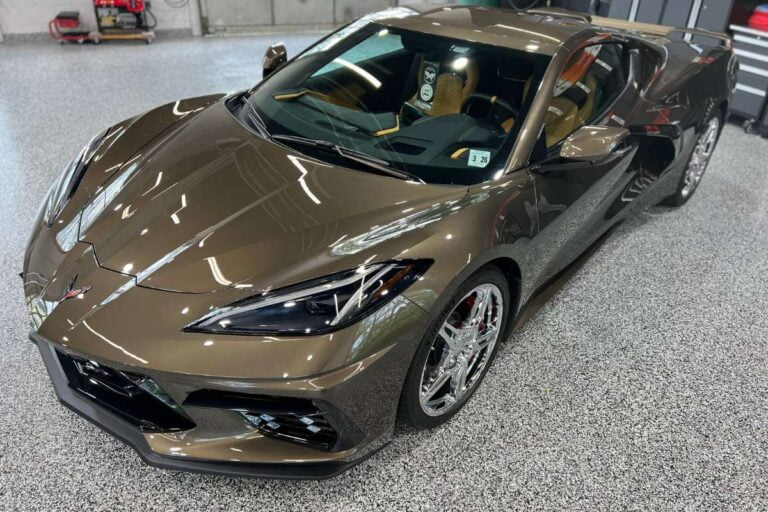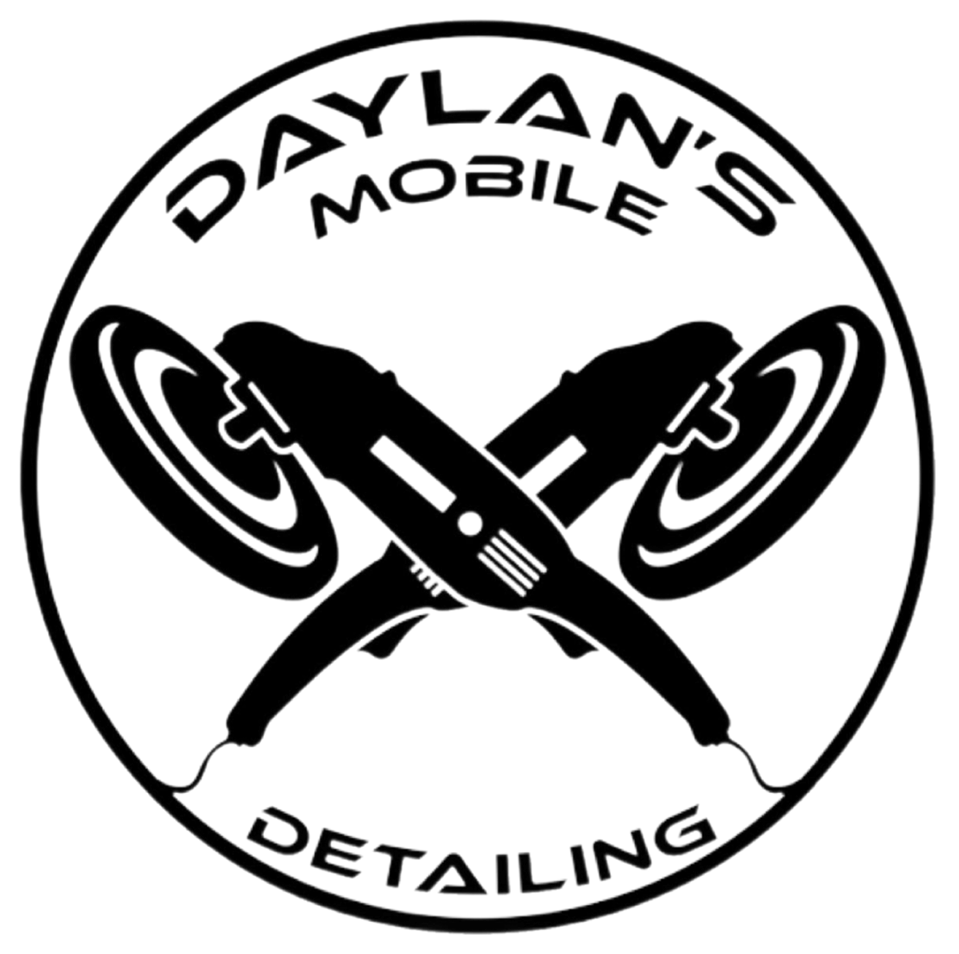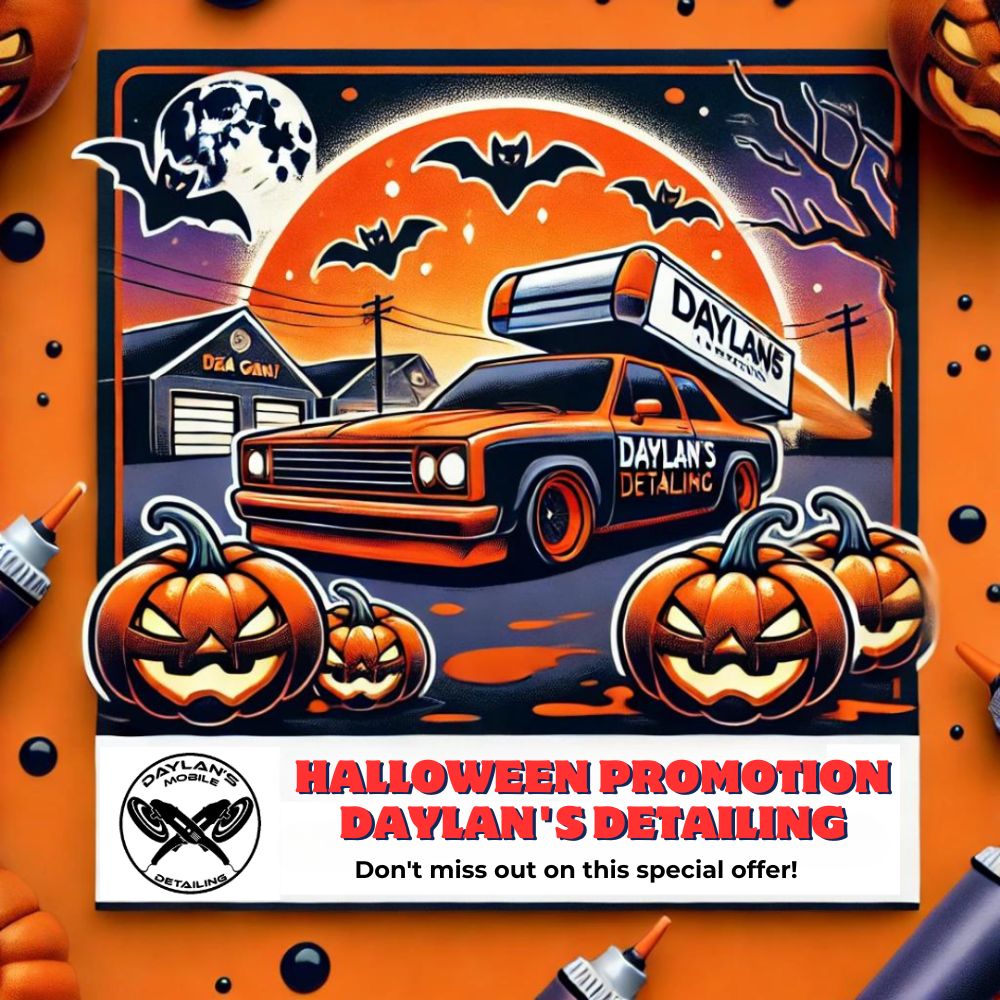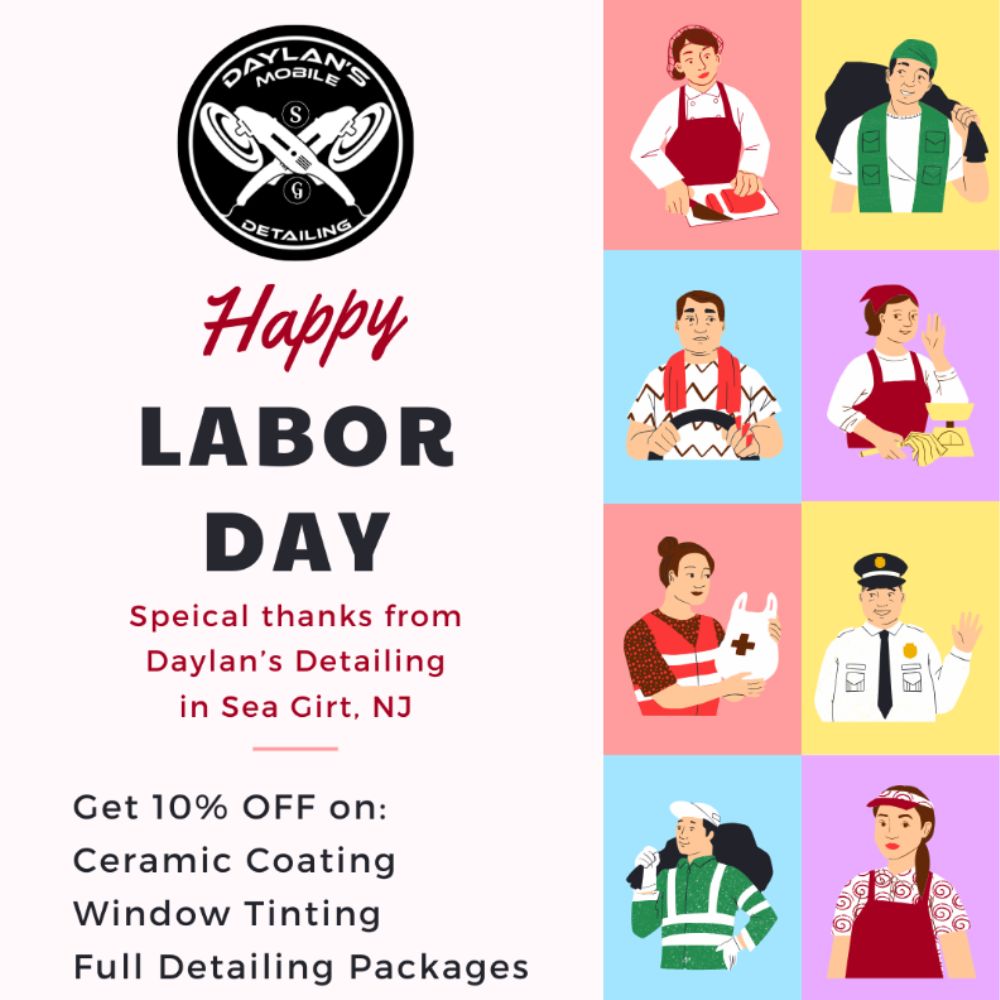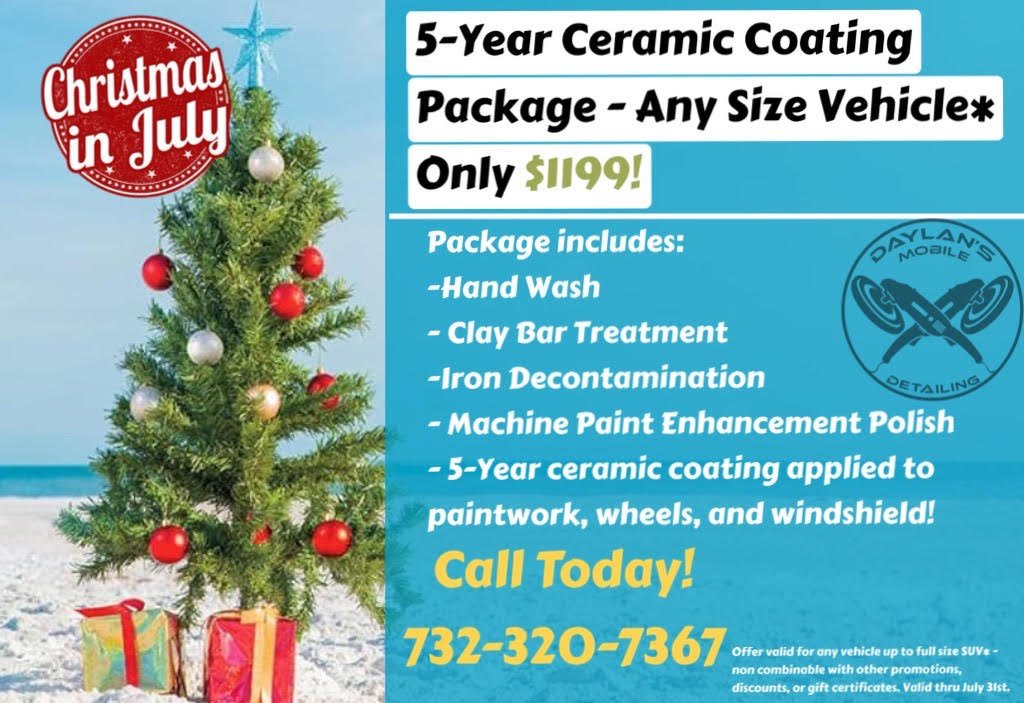Ceramic coatings and PPF: Which is applied first?
Two popular options stand out whenever you need to protect your vehicle’s paint are paint protection film (PPF) and ceramic coatings. But which is applied first for the best result? Usually, it would help if you had PPF installed before applying ceramic coatings. To learn more about each option, let’s continue reading!
What is PPF?
Paint protection film (PPF), a clear bra, is a thermoplastic urethane film applied to a vehicle’s exterior. PPF shields the paint from physical damage, including scratches, rock chips, bug splatter, and minor abrasions.
PPF provides several benefits to your vehicle:
- UV protection: PPF provides a layer of UV protection, shielding your paint from these harmful rays.
- Stain resistance: PPF is resistant to environmental contaminants like bird droppings, tree sap, and road tar.
- Self-healing properties: Many PPF products have self-healing properties that resist minor scratches and swirl marks when heated, such as from the sun or a heat gun.
- Extended durability: With proper care and maintenance, high-quality PPF can remain effective for up to 10 years.
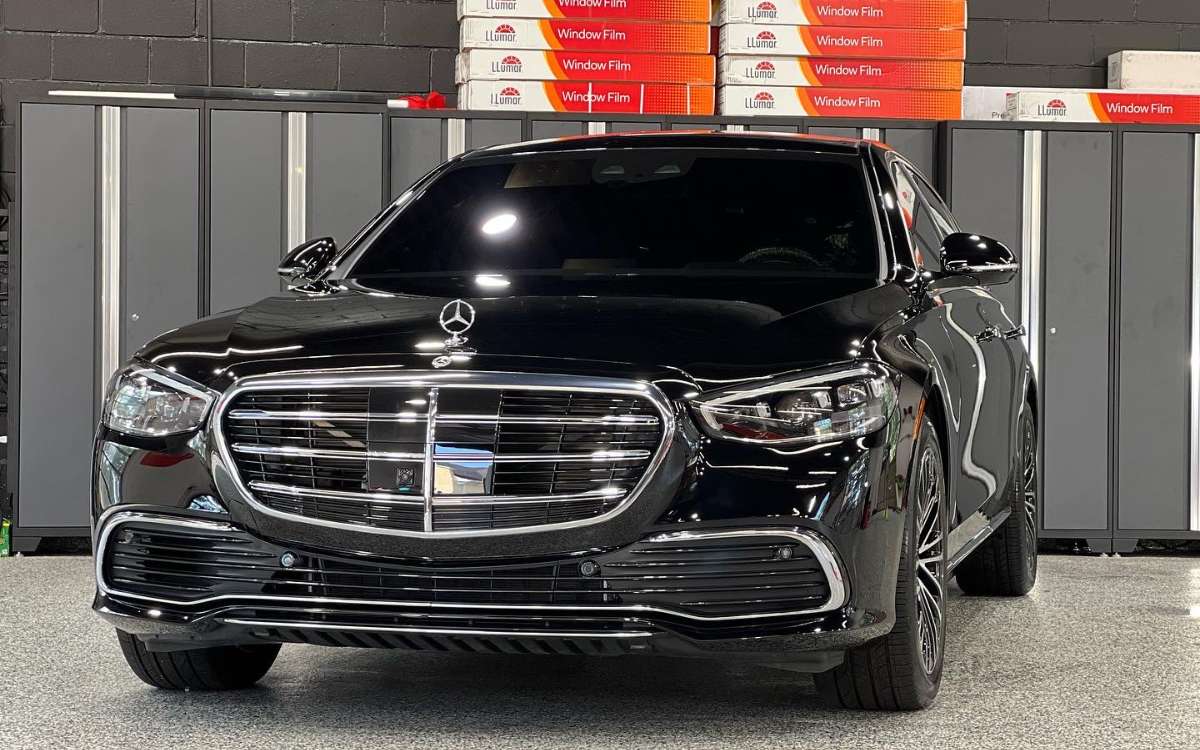

What are ceramic coatings?
Ceramic coatings are advanced liquid polymers that, when applied to a car’s exterior, form a permanent bond with the paintwork, creating a protective layer.
Here are some of the key benefits of ceramic coatings:
- Durability: With proper care, ceramic coatings often last several years to maintain your vehicle’s appearance.
- Enhanced gloss and shine: Ceramic coatings increase the paint’s reflective properties, giving your car a showroom-like finish with a rich, deep shine.
- Hydrophobic properties: Ceramic coatings are highly water-repellent. This hydrophobic nature helps water, dirt, and grime slide off the surface effortlessly.
- UV protection: The coating protects against harmful UV rays, protecting your car’s paint from oxidation and fading.
PPF and ceramic coatings comparison
Feature
Ceramic coatings
PPF
Main benefits
Guards against chemical corrosion and UV rays, helping to prevent paint fading and maintaining the vehicle’s aesthetic appeal.
Shields against physical damage, providing a robust barrier that protects against rock chips, scratches, and other minor abrasions.
Protects from
Chemical corrosion and preventing UV rays from causing paint fading.
Physical damage such as rock chips, minor abrasions, and chemical contaminants.
Visual appeal
Boosts gloss and depth, enhancing the vehicle’s paint colors and making them appear more vibrant.
Maintains or enhances the original appearance of the vehicle.
Apply process
Easier to apply but demands careful surface preparation to ensure proper bonding and effectiveness.
Requires precise cutting and careful application, making it a labor-intensive process typically performed by professionals.
Durability
Effective for 2-5 years, depending on the quality of the coating and maintenance.
Lasts between 5-10 years with correct care and consideration of environmental factors.
Price
Lower initial cost but higher long-term expenses due to frequent maintenance.
Higher upfront cost but lower long-term expenses due to durability and infrequent replacement.
Maintenance
Requires regular maintenance to keep its water-repellent properties and appearance intact.
Easy upkeep, similar to caring for standard paint.
Which is applied first?
When choosing paint protection film and ceramic coatings for a vehicle, typically, PPF is applied first. PPF protects the paint from scratches, rock chips, and other minor abrasions.
Then, ceramic coatings are applied over the PPF to provide additional protection, enhanced gloss, and to facilitate maintenance. The combination of PPF and ceramic coatings offers comprehensive protection for your vehicle’s paintwork.
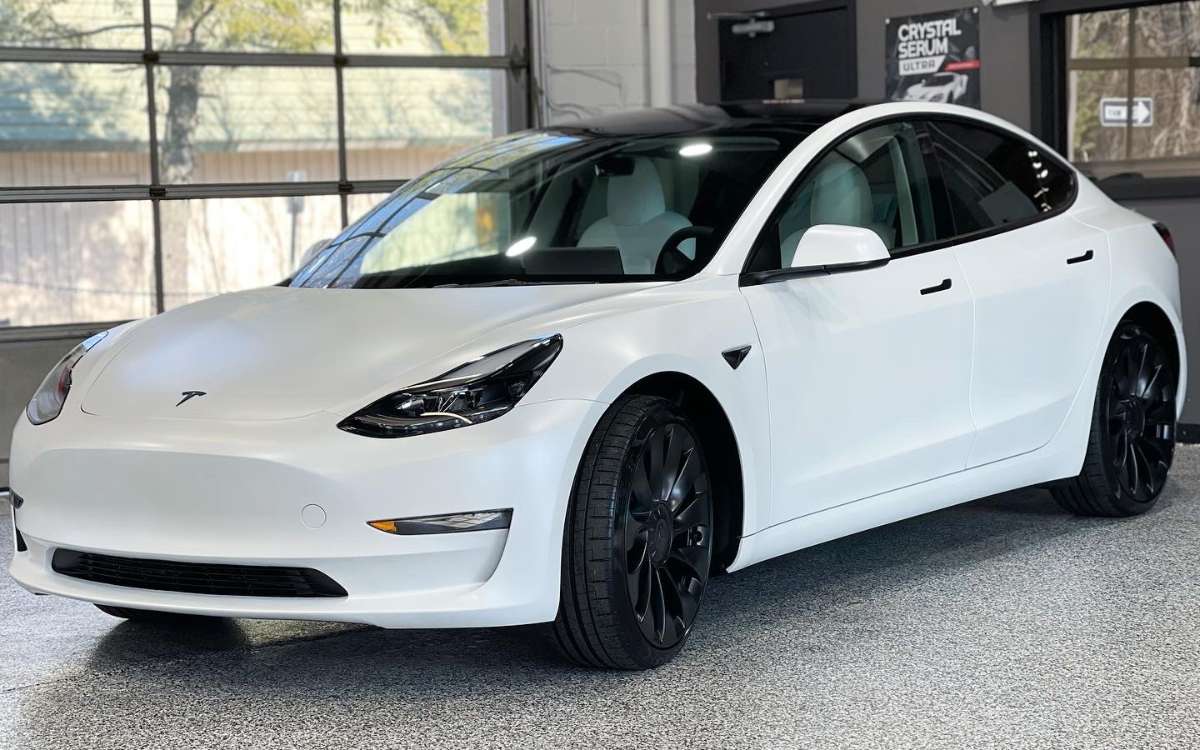
When can I apply ceramic coatings after PPF is applied?
Before applying a ceramic coating over PPF, it’s essential to ensure that the PPF has fully cured and is free of any bubbles. This step is critical to ensure a stable and flawless surface for the ceramic coating. It prevents issues like PPF shifting or trapping air bubbles during application.
The curing time for PPF can vary widely depending on the type and brand of film used. Some PPF products may cure relatively quickly, within one to two hours, while others may require up to two weeks. You should consult with your PPF installer or manufacturer to determine the specific curing time recommended for the particular product applied to your vehicle.
Enhance your car's appearance with Daylan's Detailing!
Experience your vehicle’s transformation into a stunning masterpiece with Daylan’s Detailing! Our team excels in PPF and ceramic coating services, ensuring your car looks immaculate!
Contact Daylan’s Detailing today at (732) 320-7367 to schedule your appointment. You can also visit us at 2608 Route 37 East, Toms River, NJ 08753, or 2163 NJ-35 Suite B, Sea Girt, NJ 08750. Trust us to provide your car with the ultimate protection and glossy finish it deserves!
Realated Post:



